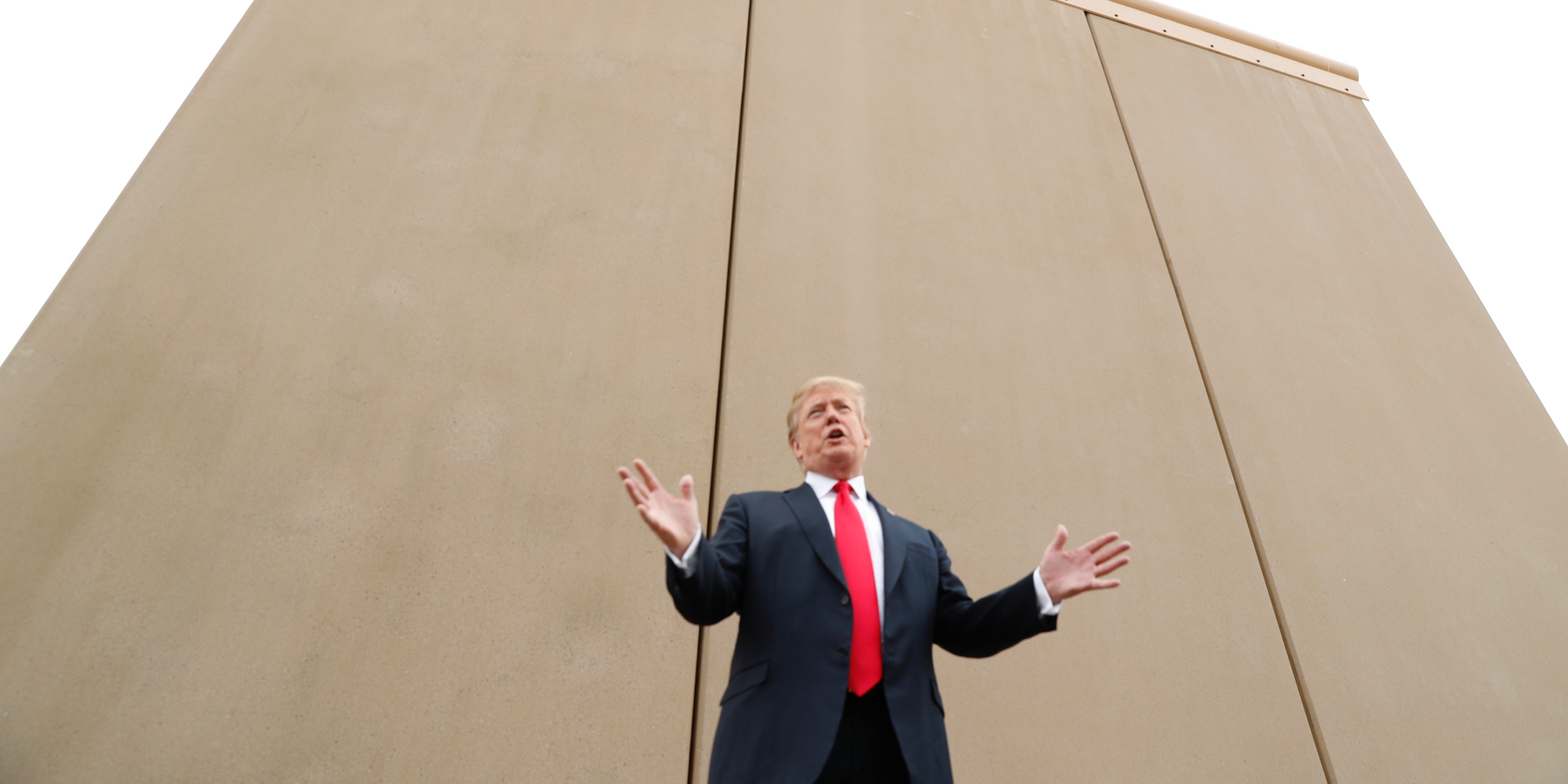President Donald Trump made a long-expected visit to the Otay Mesa port of entry in San Diego, California, on Tuesday to visit eight prototypes of the wall he has promised to build along the US-Mexico border.
Trump hasn’t yet secured funding from Congress for the wall, but the prototypes were commissioned and unveiled last October nonetheless.
Workers from six companies took a month to construct the prototypes designed to deter illegal entry of immigrants and drugs. After that, the tactical teams took over to test each stretch of wall to test against breaching, climbing, and digging.
Four of the prototypes are concrete and four are made of other materials, including steel. Several prototypes have features like “see-through” grating at the bottom, piping, and metal lattices and spikes.
Here's what Trump saw at the border:
Both supporters and protesters showed up to greet the president and express how they felt about his long-promised wall on Tuesday.

Protesters converged on both sides of the border — on the Mexican side in Tijuana, people hoisted up signs written in Spanish and what looked like a piñata resembling Trump.

Trump spoke to media in front of one of the concrete prototypes, noting that it would be one of the hardest models to scale, but was disappointed it lacked the "see-through" component he desired.

"You have to have see-through," Trump said. "You don't know what's on the other side of the wall … You could be two feet in front of a criminal cartel."

Two of the eight prototypes are partially see-through.

Trump has also previously explained that the transparency component will allow people on the US side to avoid getting hit by "large sacks of drugs" catapulted over the wall.

Source: Business Insider
Trump went on to point out the border fencing just behind the prototypes, which he noted were patched up in multiple places from where immigrants or drug smugglers cut holes.

"If you don't have a wall system, we're not going to have a country," Trump said.

In the end, Customs and Border Protection officials believe it's likely that components of multiple prototypes will be merged to create different walls depending on what type of land they'll be constructed on.

Source: Business Insider

